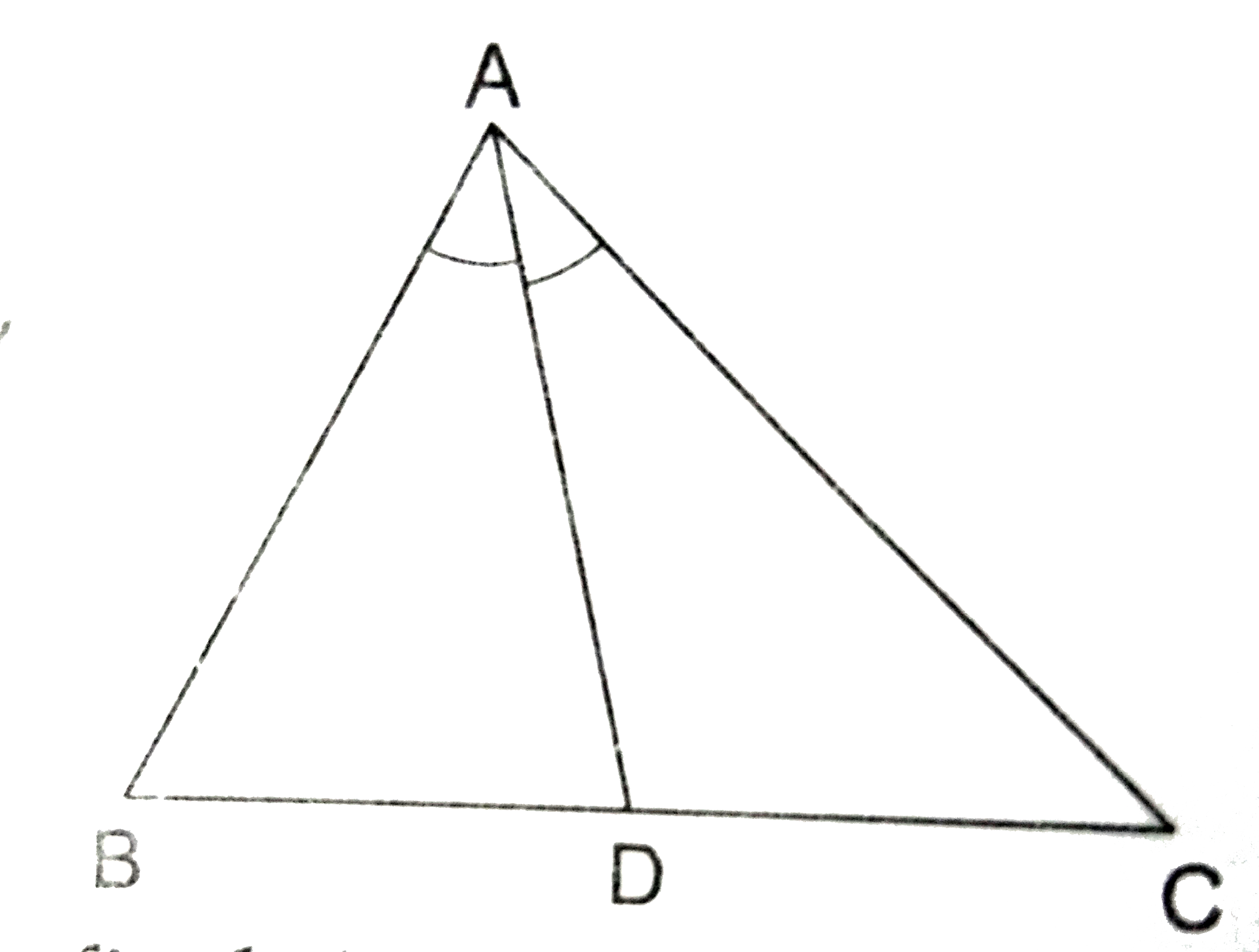In ΔABC AD is angle bisector such that BD : DC = 2 : 3. If AB = 7 cm then find AC : BC.
2:3
3:2
21:10
Data insufficient
To solve the problem step by step, we will use the Angle Bisector Theorem, which states that the ratio of the lengths of the two segments created by an angle bisector is equal to the ratio of the lengths of the other two sides of the triangle.
1. Identify the Given Information:
- Triangle ABC with angle bisector AD.
- The ratio of segments BD to DC is given as 2:3.
- Length of AB is given as 7 cm.
2. Assign Variables:
- Let BD = 2x and DC = 3x, where x is a common multiplier.
- Therefore, the total length of BC can be expressed as:
BC=BD+DC=2x+3x=5x
3. Apply the Angle Bisector Theorem:
- According to the Angle Bisector Theorem:
ABAC=BDDC
- Plugging in the known values:
7AC=2x3x
- Simplifying the right side gives:
7AC=23
4. Cross-Multiply to Solve for AC:
- Cross-multiplying gives:
7⋅3=2⋅AC
21=2⋅AC
- Now, divide both sides by 2:
AC=212 cm
5. Calculate the Length of BC:
- We already found that BC = 5x. We need to find x.
- From the ratio of BD and DC, we can express x in terms of AC:
ACBC=21/25x
- Since we know BD = 2x and DC = 3x, we can substitute x:
BC=5x=5⋅25=2⋅3=3
6. Find the Ratio AC : BC:
- Now we have:
AC=212 cmandBC=5x=5⋅25=2⋅3=3
- Therefore, the ratio AC : BC is:
AC:BC=21/23=216=72
Final Answer:
The ratio of AC to BC is 72.
- Triangle ABC with angle bisector AD.
- The ratio of segments BD to DC is given as 2:3.
- Length of AB is given as 7 cm.
- Let BD = 2x and DC = 3x, where x is a common multiplier.
- Therefore, the total length of BC can be expressed as:
BC=BD+DC=2x+3x=5x
- According to the Angle Bisector Theorem:
ABAC=BDDC
- Plugging in the known values:
7AC=2x3x
- Simplifying the right side gives:
7AC=23
- Cross-multiplying gives:
7⋅3=2⋅AC
21=2⋅AC
- Now, divide both sides by 2:
AC=212 cm
- We already found that BC = 5x. We need to find x.
- From the ratio of BD and DC, we can express x in terms of AC:
ACBC=21/25x
- Since we know BD = 2x and DC = 3x, we can substitute x:
BC=5x=5⋅25=2⋅3=3
- Now we have:
AC=212 cmandBC=5x=5⋅25=2⋅3=3
- Therefore, the ratio AC : BC is:
AC:BC=21/23=216=72
The ratio of AC to BC is 72.
Topper's Solved these Questions
Similar Questions
Knowledge Check
AD is angular bisector of AABC such that BD:DC = 2:3. If AB = 7cm, what is AC: BC?
A2:3B3:2C21:10DNone of theseIn ΔABC, AB=AC and D is a point on side AC such that BD = BC, If AB = 12.5 cm and BC = 5 cm, then what is the measure of DC ?
A2 cmB2.5 cmC3 cmD1.8 cmIn figure AD is the bisector of ∠BAC. If BD=2cm,CD=3cmandAB=5cm. Find AC :
 A6 cmB7.5 cmC10 cmD15 cm
A6 cmB7.5 cmC10 cmD15 cm
In a ΔABC,AD is the bisector of ∠A.
(i) If AB=6.4cm,AC=8cmandBD=5.6cm, find DC.
(ii) If AB=10cm,AC=14cmandBC=6cm, find BD and DC.
(iii) If AB=5.6cm,BD=3.2cm,andBC=6cm, find AC.
(iv) If AB=5.6cm,AC=4cm,andDC3cm, find BC.

View SolutionIn a △ABC,AD is the angle bisector of ∠CAB and a median to BC. If AC=15 cm, find AB.
View SolutionIn a ΔABC, AB = AC and D is a point on AB, such that AD = DC = BC. Then, ∠BAC is
View SolutionIn ΔABC,AD is the inernal besector of ∠A. If BD = 5cm , BC=7.5 cm , then AB:AC=

View SolutionIn △ABC,D is a point on BC such that AD is the bisector of ∠A, AB = 11.7 cm, AC = 7.8 cm and BC = 13 cm. What is the length (in cm) of DC?
त्रिभुज ABC में, D, BC पर स्थित एक ऐसा बिंदु है कि AD, ∠A का समद्विभाजक है |AB =11.7 सेमी, AC = 7.8 सेमी तथा BC =13 सेमी है | DC की लंबाई ( सेमी में ) कितनी है?
View Solution
